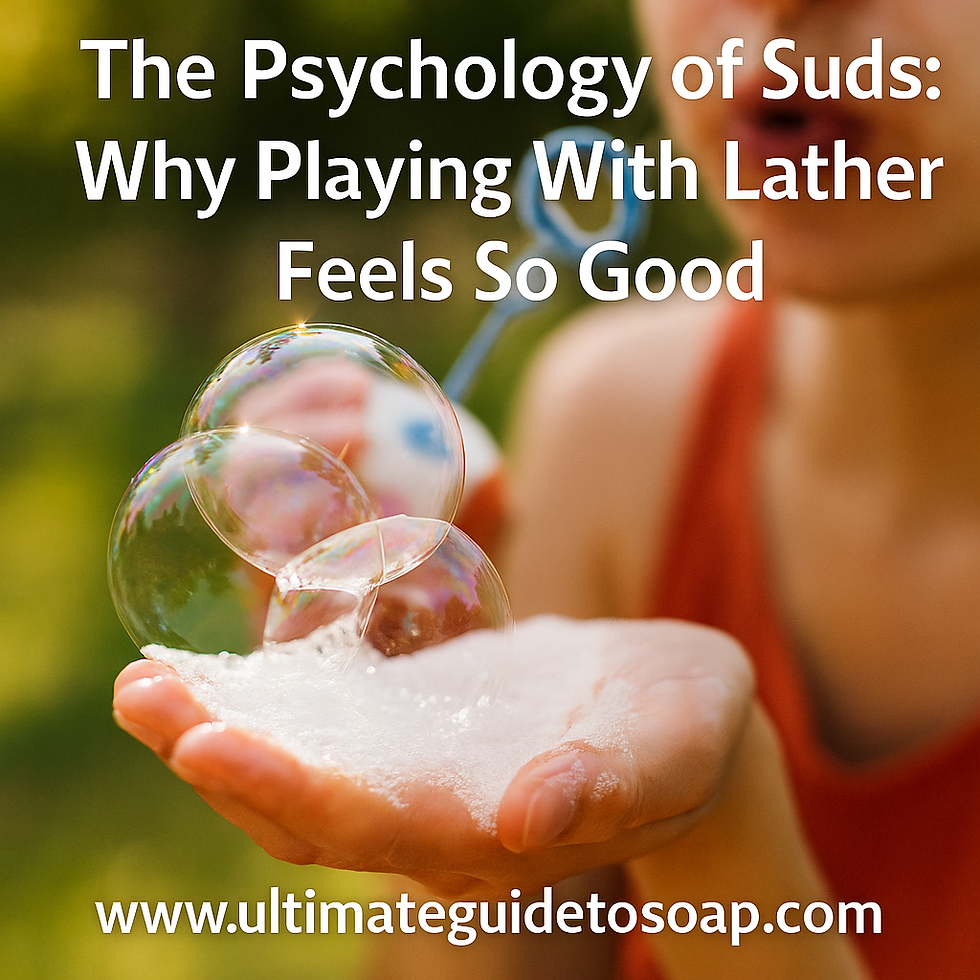Reader Question: Liquid Lactic Acid in Soap?
- Jan 31, 2022
- 4 min read

I have been asked the question "Can I just add some liquid lactic acid, like I use for facial peels, to my soap after the cook to make it more fluid?" several times this week so I thought I would take the time to answer.
It is certainly possible to add various ingredients and acids to your soap, but adding unregulated amounts of different strength liquid acid facial peel treatments, should not be one of them. There is currently some information circulating the internet and Facebook groups that yogurt only decreases the viscosity of cooked soap because it has lactic acid in it. This philosophy that yogurt only makes soap more fluid because of its lactic acid content is flawed.
Yogurt consists of anywhere from 80-95% water. This high water concentration is the primary reason it decreases the viscosity of soap when added after the cook. Many people add 1-2 TBSP PPO (per pound oil). One TSBP is equivalent to approximately 0.50 ounces or .45oz water from the yogurt (90% water yogurt). If your 1lb recipe made with 38% water concentration calls for 6oz and you add another .50 to 1 full ounce, thats a LOT of extra moisture! To find a replacement for yogurt, you can pretty much use any other liquid. I have found that suspended and/or creamier liquids are often easier to mix (compared to water) which include sour cream, dairy milk, almond milk, coconut yogurt, and the like. Adding these liquids after being heated will help even more. Remeber, never add cold ingredients to hot process soap because it increases the rate of change in soap phases.
Yogurt has multiple acids, including like lactic, citric, acetic, formic and more which creates acidic pH. Many other additives, even vegan additives, will also have an acidic pH. Milk has a pH of 6.7 and coconut yogurt has a pH 5.2. If your other liquid sources have an alkaline or neutral pH, you can add a very small amount of powdered beet lactic acid or citric acid but this isn't often required. I do make an almond milk and beet lactic acid solution at times but I do so with intention and additional goals in mind, not simply "adding lactic acid for fludity".
Acids After the Cook
When you add an acid to a base, like when we add lye (base) to our oils (fatty acids), you get a salt. When you add stronger acids to a weaker salt, some of the weaker acids will get displaced. If you add a stronger acid to your finished soap, it will displace some of the weaker acids and will result in free fatty acids or an increased superfat. If too much of a strong acid is added to soap, it will create a very mushy bar of soap because of this and it is one of the reasons why we can't "just add some acids" after the cook to "lower the soap pH".
This process of acidification naturally happens without the addition of any extra additives as our soaps are cured. Carbon dioxide is acidic in nature and when soap is exposed to the air, acidification occurs which lowers the pH.
Lactic Acid to Sodium Lactate
Pure lactic acid is a potent acid and can cause major skin damage and permanent scarring/discoloration if not used properly. I would not recommend for beginners in soap making or for use by untrained skin professionals as part of a skin care regimine.
The liquid lactic acid available for purchase online for at home facial peels often comes in varying concentrations and strengths and include combinations of different chemicals and additives. These are not viable options for use in soap making. If you are familiar with and have experience with the use of acids, bases and salts, in addition to an advanced knowledge of saponification, you may use lab grade pure lactic acid to make sodium lactate in the lye solution or add a small amount after the cook in a solution of water or your PCSF. If lactic acid is to be used, safe handling practices must be implemented.
(For professionals only: To create your own sodium lactate, add pure lactic acid to the water before dissolving your lye. 10g of lactic acid neutralizes 4.44g of NaOH and 10g of lactic acid neutralizes 6.23g of KOH. If you do not account for this and adjust your lye concentration, a portion of the lye intended for the oils will be "consumed" and your soap will have additional free fatty acids or an increase in superfat.)
Obtaining a fluid recipe is so much more than simply adding some yogurt or other liquid after the cook. It takes a considerable amount of knowledge and requires the application of the fundamentals of hot proces soap science. By using the tools and guidance provided in The Ultimate Guide to Hot Process Soap, you are well aware of this fact and are equipped to make a beautiful, fluid and easily poured and swirled hot process soap in just a few short minutes, yogurt optional!
Try some other additives if you are interested in non-yogurt options to increase fluidity after the cook, but unless you will be working with a qualified chemist or have experience with lab grade acids and bases, use the tools and resources gained from UG2HP to create the beautiful and fluid hot process soap you desire... and steer clear of facial peels in soap!
Happy Soaping!




Comments